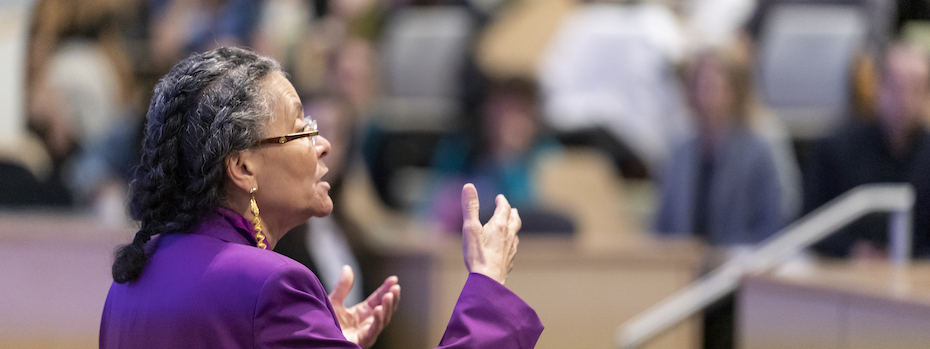Strategic Plan

OHSU’s strategic plan is built around our vision:
OHSU will partner to make Oregon a national leader in health and science innovation for the purpose of improving the health and well-being of all Oregonians and beyond.
Six goals — timeless aspirations — form the basis of the plan:
- Building a diverse, equitable environment where all can thrive and excel.
- Being the destination for transformational learning.
- Enhancing health and health care in every community.
- Discovering and innovating to advance science and optimize health worldwide.
- Partnering with communities for a better world.
- Ensuring a sustainable foundational infrastructure.
These goals span OHSU’s missions, supported by objectives that are focused on identifying new ways to understand disease, treat illness and train the next generation of scientists and health professionals. They begin with our commitment to listen to what communities — across Oregon and around the world — need from OHSU, and end with our commitment to the people who will respond to those needs and make this work a reality.
OHSU 2025 reflects not only the breadth and complexity of the state’s only academic health center but also the challenges in health and science that OHSU must address. OHSU’s scale and scope, our profound connection to Oregonians and our decades of experience at the leading edge of innovation have already laid the foundation for this plan’s success.
The plan is not the only point
OHSU 2025 was developed from the ground up. More than 5,000 OHSU members contributed to the plan, providing input on OHSU’s future picture, shaping the plan’s goals, and developing detail around its objectives and tactics.
The process that created the plan — and will carry through its implementation — speaks volumes about what makes it unique: It is a strategic plan that is not only for, but by, OHSU.
It outlines the work to which OHSU is uniquely suited, designed by the people who make us unique.
Update
In March 2020, OHSU 2025 was put on pause while OHSU responded to the pandemic. In 2021, the 2025 plan underwent review and revision resulting in the reallocation of funding and reprioritization of projects. Some objectives were streamlined or combined while several new areas of focus were added, changes that reflect both the pandemic’s ongoing impact on the organization and its people and the commissioning of and response to the Covington Report.
OHSU 2025 may look different from when it first launched as we seek to align all the critically important and transformational work happening at OHSU. The plan will continue to be a living document responding to the needs of our members and the people of Oregon and beyond.
Highlights
- OHSU 2025 update to the Board of Directors - April 19, 2023
- OHSU 2025 update to the Board of Directors – Oct. 28, 2022
- OHSU 2025 refresh objectives
Success stories
When you’re sick, you go to the doctor. Experiencing a medical emergency? You go to urgent care or the emergency department. When you’re having surgery, you go to the hospital.
Traditionally, academic health centers like OHSU have been places where the ill and injured go for care. But the place is not what makes OHSU special. The people – patients and families, clinicians, learners and staff – are why the place matters.
As with many things since March 2020, OHSU had to rapidly transform its care model – from being the physical place people came for treatment to providing new ways for patients to access OHSU’s services digitally. Fortunately, OHSU had already begun work on this radical shift in patient care in the OHSU 2025 strategic planning process.
In the flurry of OHSU’s response to the COVID-19 pandemic Marcel Curlin, M.D., spotted an opportunity. But he had to act fast.
In stepped the Research Administration Partner Pod (RAPP), providing research administration support so Curlin and his team could focus their time and energy on a once-in-a-lifetime study to understand the human immune response to COVID and see how the epidemic unfolded at the basic science level.
When the pandemic shut down businesses, facilities and services around the globe in March 2020, OHSU did what everyone else was doing: quickly pivot to a largely remote workforce. Those first months were bumpy, to say the least, as members set up makeshift desks in their dining rooms. Remote work processes were drafted and technology was deployed to support this huge, rapid organizational change.
Two-and-a-half years later, more OHSU remote employees find themselves settled into this work environment than ever before — and are even thriving.
Approximately 1 in 4 OHSU students experience food insecurity, meaning they lack reliable access to sufficient quantities of affordable, nutritious food.
With OHSU 2025 funds, student leaders established the Food Resource Center where any OHSU student can come and get the fresh food and grocery staples they need free of charge.